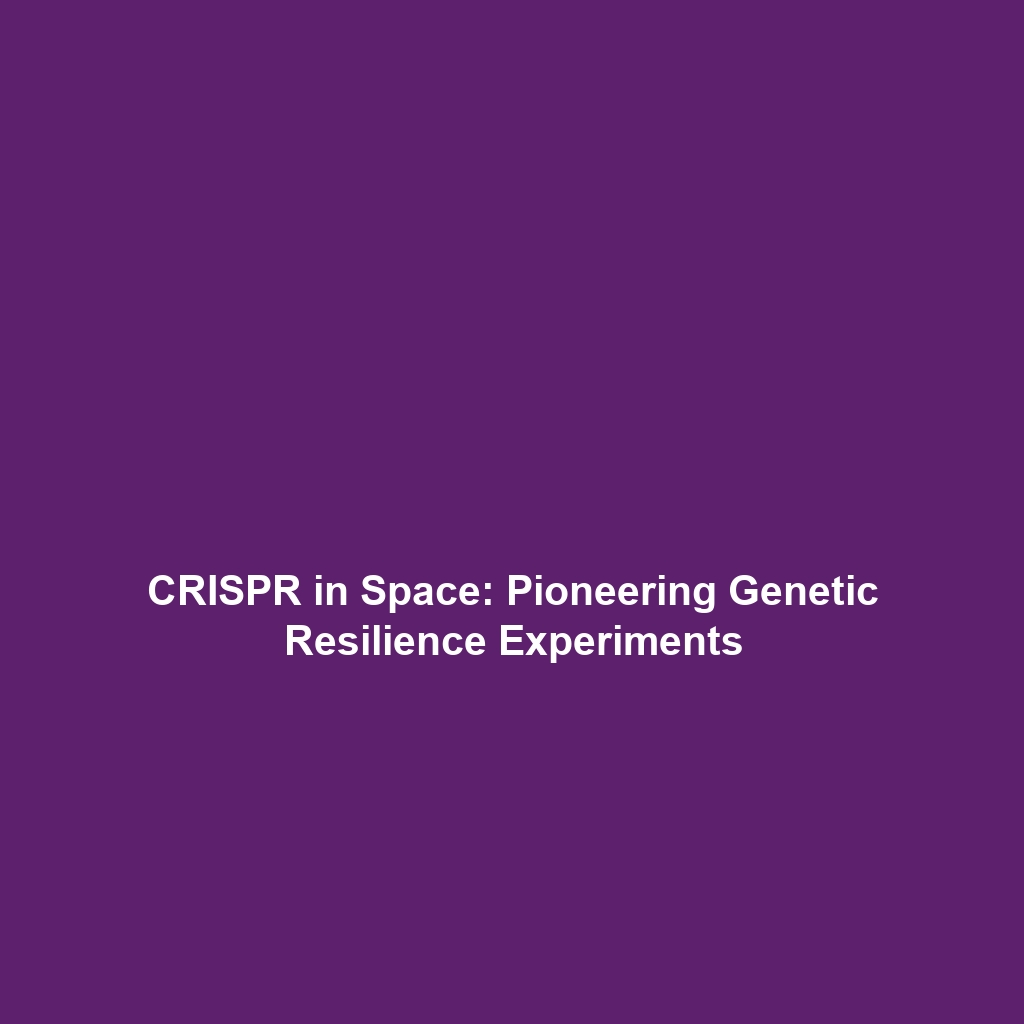Ethical Concerns and Regulatory Challenges in CRISPR Gene Editing on Animals
Introduction
The emergence of CRISPR gene editing has revolutionized biotechnology, but it brings with it significant ethical concerns and regulatory challenges, especially in its application to animals. As researchers harness the power of CRISPR to modify genomes, important questions arise regarding animal welfare, biodiversity, and long-term ecological impacts. Understanding these ethical dimensions and regulatory frameworks is crucial for scientists, policymakers, and the general public as CRISPR technology continues to advance and find applications across various fields. This article delves into the complexities surrounding CRISPR gene editing on animals, highlighting the implications for ethical standards and regulatory compliance.
Key Concepts
Ethical Implications of CRISPR on Animals
The use of CRISPR technology on animals raises several ethical concerns, including:
- Animal Welfare: Potential suffering and long-term health effects of genetically modified organisms.
- Natural Biodiversity: Impacts on ecosystems when genetically modified animals interbreed with wild populations.
- Human Benefits vs. Animal Rights: Balancing scientific advancement with ethical treatment of living beings.
Regulatory Challenges
The rapid development of CRISPR technology presents several regulatory challenges, such as:
- Legal Frameworks: Lack of consistent regulations across countries can hinder research and development.
- Approval Processes: Ensuring thorough evaluation of safety and efficacy before public release.
- Public Perception: Navigating societal concerns and ethical debates surrounding gene editing.
Applications and Real-World Uses
Understanding how ethical concerns and regulatory challenges impact the applications of CRISPR gene editing on animals is essential. Some significant uses include:
- Genetic Disease Research: Using CRISPR to study genetic disorders in model organisms.
- Agriculture: Developing disease-resistant livestock, which may improve food security.
- Conservation Efforts: Potential application of gene drives to manage invasive species.
Current Challenges
The challenges of ethically applying CRISPR in animals include:
- Long-term Impact Assessments: Difficulty in predicting ecological consequences of gene modifications.
- Equity in Access: Possible disparities in access to CRISPR technologies for different countries and organizations.
- Regulatory Harmonization: Need for unified international regulations to ensure safety and efficacy.
Future Research and Innovations
Looking ahead, upcoming innovations in the field of ethical concerns and regulatory frameworks for CRISPR on animals include:
- Next-Generation Sequencing: Improved methods for monitoring the effects of gene editing on biodiversity.
- Ethics Committees: Establishing comprehensive ethics boards to guide CRISPR research.
- Public Engagement: Initiatives aimed at educating the public on the science and ethics of CRISPR technology.
Conclusion
In summary, the intersection of ethical concerns and regulatory challenges within the scope of CRISPR gene editing on animals presents a complex landscape that warrants careful consideration. As this powerful technology continues to evolve, it is imperative to balance innovation with responsibility. Stakeholders must engage in dialogue about best practices and ethical standards to ensure that animal welfare and biodiversity are protected. For further reading, consider exploring topics on future research directions in CRISPR and best practices for regulatory frameworks in gene editing.







